Song for War: Mediterranean Operations
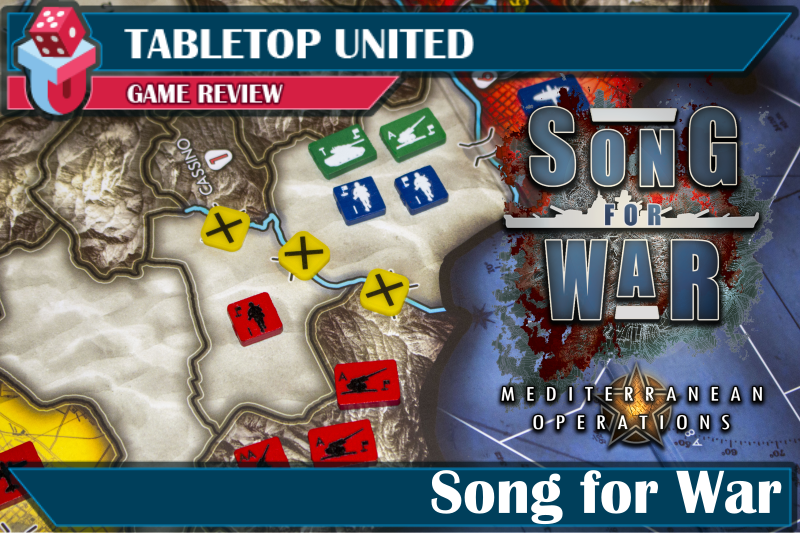
Designer: Chris Helm & Seth Stigliano
Artist:
Publisher: Invicta Rex Games
Year Published / Crowdfunded: April 2025
No. of Players: 2-4
Ages: 14+
Playing Time: 120 - 420 Minutes
Main mechanic / Theme: Area Control, Dice Rolling, Hidden Movement
Song for War doesn’t try to recreate history, thank goodness. What it does do is create a deep, rich, and immersive experience without getting bogged down by dry mechanics. Wargamers, tacticians, and armchair generals should love this one like their grandmother.
Disclaimer: Publisher provided a copy or prototype of the game for this review.
Overview:
Song for War, at it’s core, is a war game. However, it’s a modern design following modern design principals, not only in look, but in game play. Depending on the scenario and map players will take on the role of Axis or Allied powers during the Mediterranean theater of World War II. Its look harkens back to the days of tiles and chits on a map but updated for today’s modern gamers with beautifully illustrated regions and areas from which to stage the greatest battle on earth. Can Great Britain and the U.S. hold back the onslaught of the Axis allied German and Italian powers? Players will decide to move their forces and enact strategy as individual nations or at the same time as Axis or Allied powers. Units in Song for War are deployed on land, in the sea, or in the air with faster units moving first and more often followed by slower or more cumbersome units with more firepower moving less or less often. You’re hidden fleets stay hidden until you wish to surprise your opponent or they are found by the enemy. Your goal is to take and control different objectives, control shipping and supply lanes, deploy new tech and units, while using your strategy to defeat your opponent’s units in contested areas of the board.
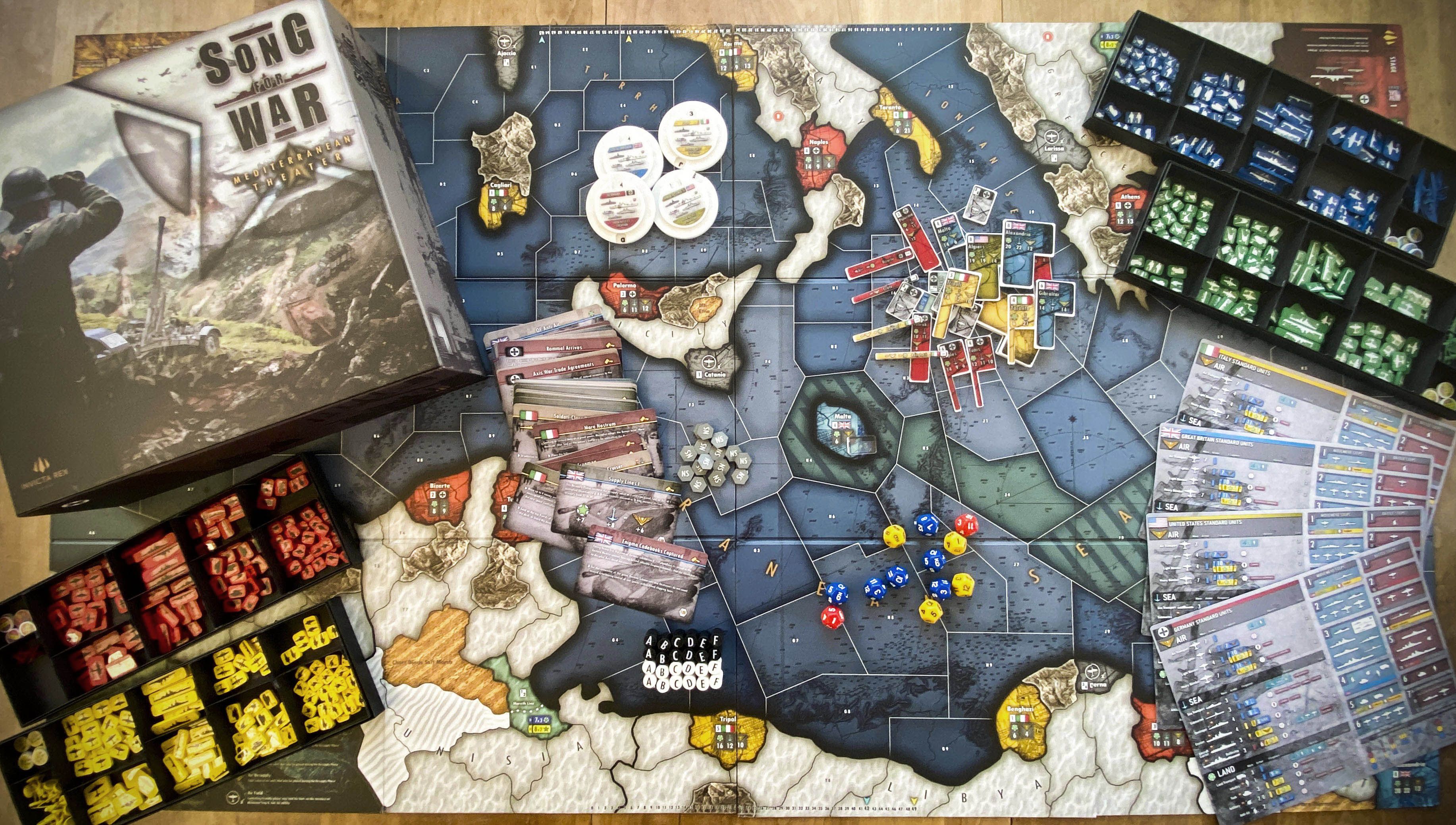
Gameplay and mechanics:
Song of War provides a couple of different options when planning a game. You may want to choose a longer game and start in November 1942 with a 4 to 7 hour game or start in April 1943 with Operation Torch fully on it’s way with a shorter span of play. Both options use the armies for the U.S. and Great Britain versus Germany and Italy. Each chosen scenario is played in a number of stages which show which country goes first through each stage followed by the opposing side.
Following the scenario set up and looking over your units (each unit, such as air, sea, and land) have different abilities, of course, but each also has a Move, Armor, Firepower, and Cost associated with them. However, that’s just the beginning. Certain types of units can only engage with other specific types of units and the firepower and armor of each unit varies based on the color of die that is used when attacking and defending. For example, there are three levels of firepower and armor dice, starting with white (light), gray (medium), and black (heavy).
Stages in each scenario are broken down into phases and are dependent on which starting scenario is used. Those phases include Tactical, Victory, National Support, and Resupply.
The Tactical step is where movement occurs, battles take place, objectives and airfield control is won, lost, or maintained. To maintain a bit of uniqueness that covers the wide variety of units in World War 2, the movement step has six steps of its own. This “zoomed in” movement allows units which are faster or quicker to move first or in the case of fighters or other air units, they may move multiple times and before other units move. A cool feature built into Song for War is the capability of units to carry other units. Transports are important in allowing you to move units more easily and quickly to build your offense or defense on the board. The Tactical step is also where declared battles take place (the dice are rolled! See below) and objectives and airfields are contested.
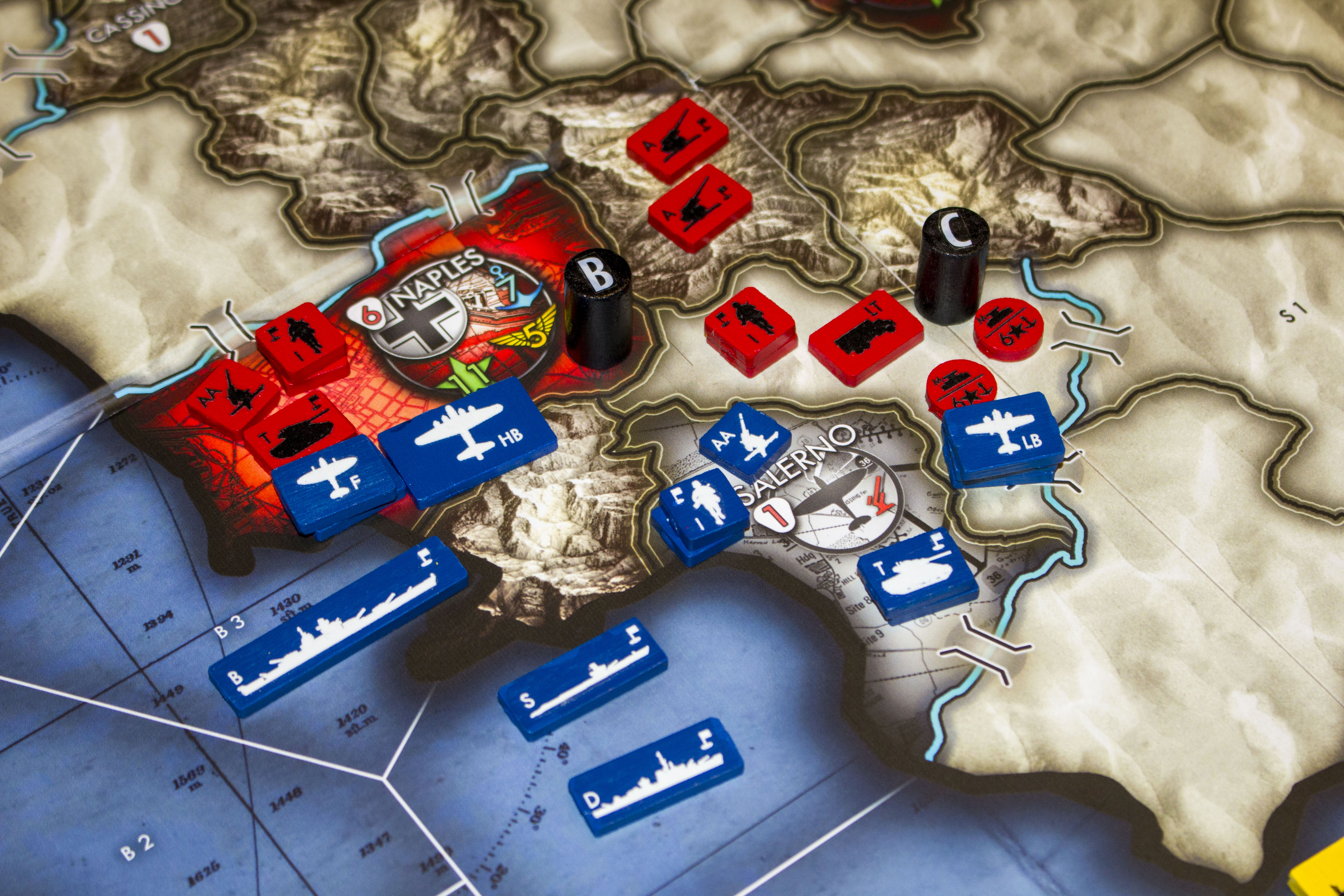
In the Victory step players verify which nation controls each objective and airfield. This gives victory points to each side. Next, dependent on the scenario, players will check for campaign success- the side that meets the win condition based on the chosen scenario wins- either through a standard victory or automatic victory.
The National Support Phase (Mediterranean theater scenarios) allows players to play National Support cards if they have enough support tokens to do so. The cards played are the bonuses or surprise events that can happen including upgrading a unit, turning a unit into a “unique” and more powerful version of itself, and more. I found that this phase allows for some interesting and surprising actions to happen on both sides that may not have been planned out in advance. This adds another layer to the game play as you never know what your opponent has in store for you to react to. Since there are many gears, levers, and buttons you can activate in the game the support phase adds a bit of surprise to the game play. In battle one never knows what sneakiness the enemy has up their sleeves and the National Support Phase allows that to shine without totally disrupting your own plans and strategy. Of course, you have your own surprises in store for your opponents.
The last phase is the Resupply Phase. Based on the territory that you control you can purchase and place new units on the board. The Resupply Value is depending on the the objectives that are controlled, shipping lanes in the water, blockades that are formed, the bombing ability of heavy bombers, and National Support cards. Once your resupply value is figured you may purchase units and place new units in appropriate locations on spaces you control.
Players LOVE rolling dice and the battle mechanic in Song for War doesn’t let you down. During the battle declaration part of the Tactical Phase. There are seven “battle” steps to follow. On each step, both sides roll for their hits simultaneously and tally the hits for their side. Eachside removes casualties- Roll, tally, and remove. Interestingly, the seven battle steps show which units get to attack. For example, in battle step 1, only the anti-air units roll. Step 5 allows battleships, aircraft carriers, cruisers, and artillery to attack, while step 6 allows for tanks and infantry to attack.
Theme, Artwork and Illustration, Graphic Design and Layout
The map on the provided prototype was beautifully illustrated. Modern layout and design means that playable areas on the board are easily identified while the soft colors and map design help illustrate shipping lanes, regions of Mediterranean conflict, deployment areas, and areas both sides will fight over. Pulling such a large geographical area into a single board was a tough achievement but one that was done well. Iconography is well done and allows players quick and easy perusal to find important information needed for game play. I love the design of the board and once you get going the numbers on the tokens and units become second nature. Territory is easily identified which helps you plan upcoming moves, which areas you need to defend and which areas you’ll want to go on the offensive with.
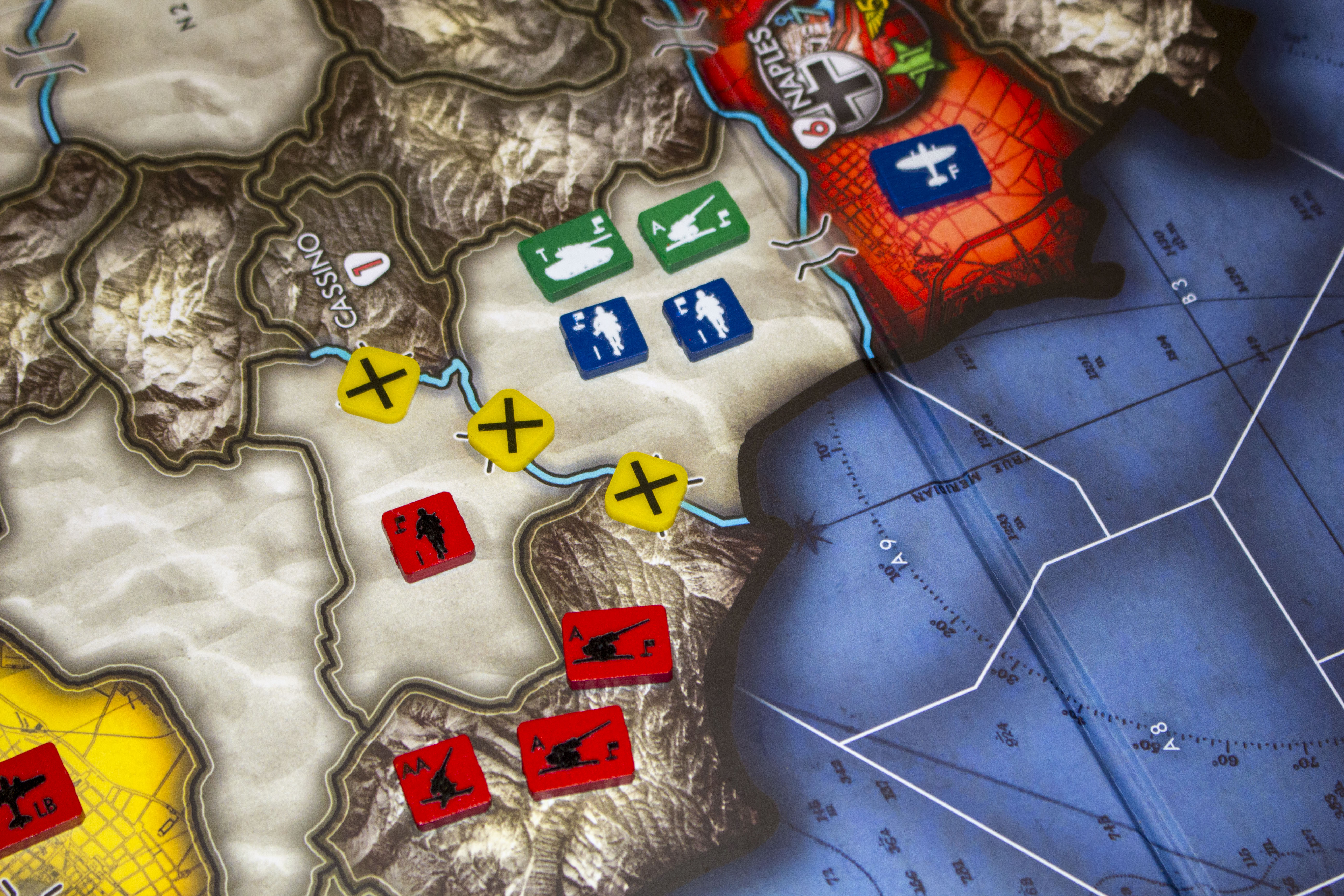
Inclusivity and Accessibility:
Tabletop United believes that diversity is a source of fun and happiness. Nurturing and celebrating our personal differences can lead to amazing gaming (and life) experiences. Each reviewer views the world through their own particular lens and has a wide and varied experience from which they will write and review from.
I am a color-blind player and whether or not the colors I see may be different than what non-color deficient people see, I was able to identify spaces, territory, and other important spaces on the board. Units and tokens didn’t get lost and in fact, communicating a large amount of information to the players is important in a game as grand as this and I think the graphic design, layout, and color choices only helps to enhance the player experience.
Players with limited time or a small table space may find that this game sits on their shelves.
Furthermore, A song for War depicts real-life events which portrayed atrocities and real people that fought and died for a cause they believed in. Playing a game like this may not be suitable for some people.
What worked:
For some of the reasons the layout and color palette really drew me to the game. The color choices and the graphic design, for me, enhanced the game play and helped organize a game covering such a grand event in history. Although there are a lot of things that take place in the game, the organization of the different phases and steps, when followed, allows the uniqueness of your sea, land, and air units to shine and show their strengths and weaknesses. The strategy behind choosing where to attack or defend and in what order meant that your choices had meaning. Players have a lot of adjacency in Song for War, which may seem a bit counter intuitive in a game covering a historical event that we know the outcome to. Essentially, the design choices in the game lets you play through reenactments of events in World War 2 without drowning you in realism.
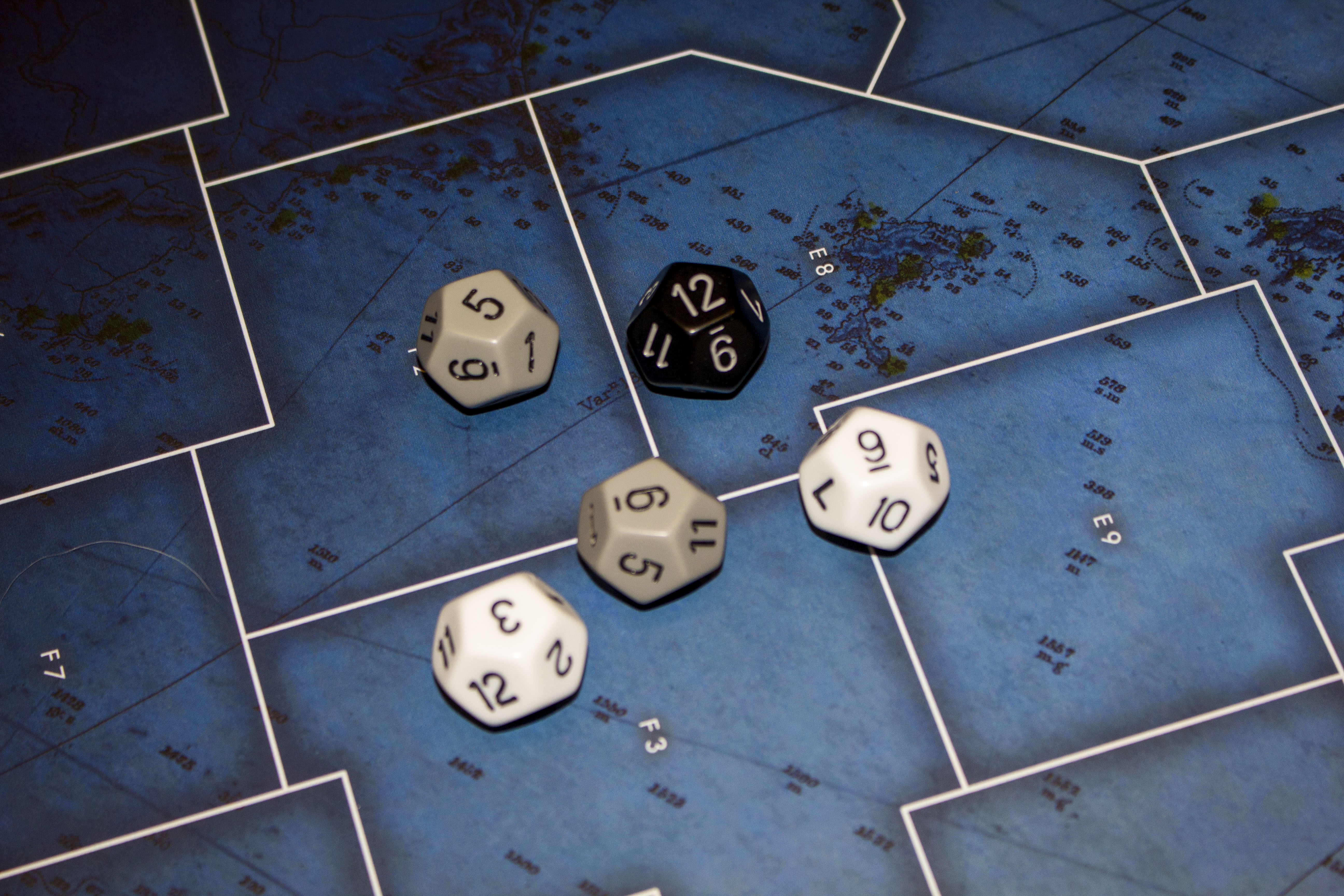
Final thoughts:
A Song for War knows its audience. It’s not going to draw in every board game player and having such a focus on the Mediterranean events of World War 2 does limit the type of players that the game speaks to. I thought that the game didn’t bog you down in minutiae but it did allow you to implement various unique units (land, sea, and air) from each country’s strengths and weaknesses. There are enough options and surprises in the game that nothing is predetermined. Different types of players can win or lose in each game. If you are a fan of historical war games, players adjacency, and the chaos of battle then this game should be appealing. Song for War draws inspiration from games like Axis and Allies but brings its own unique mechanics and game play to the table setting it apart from games that came before it.
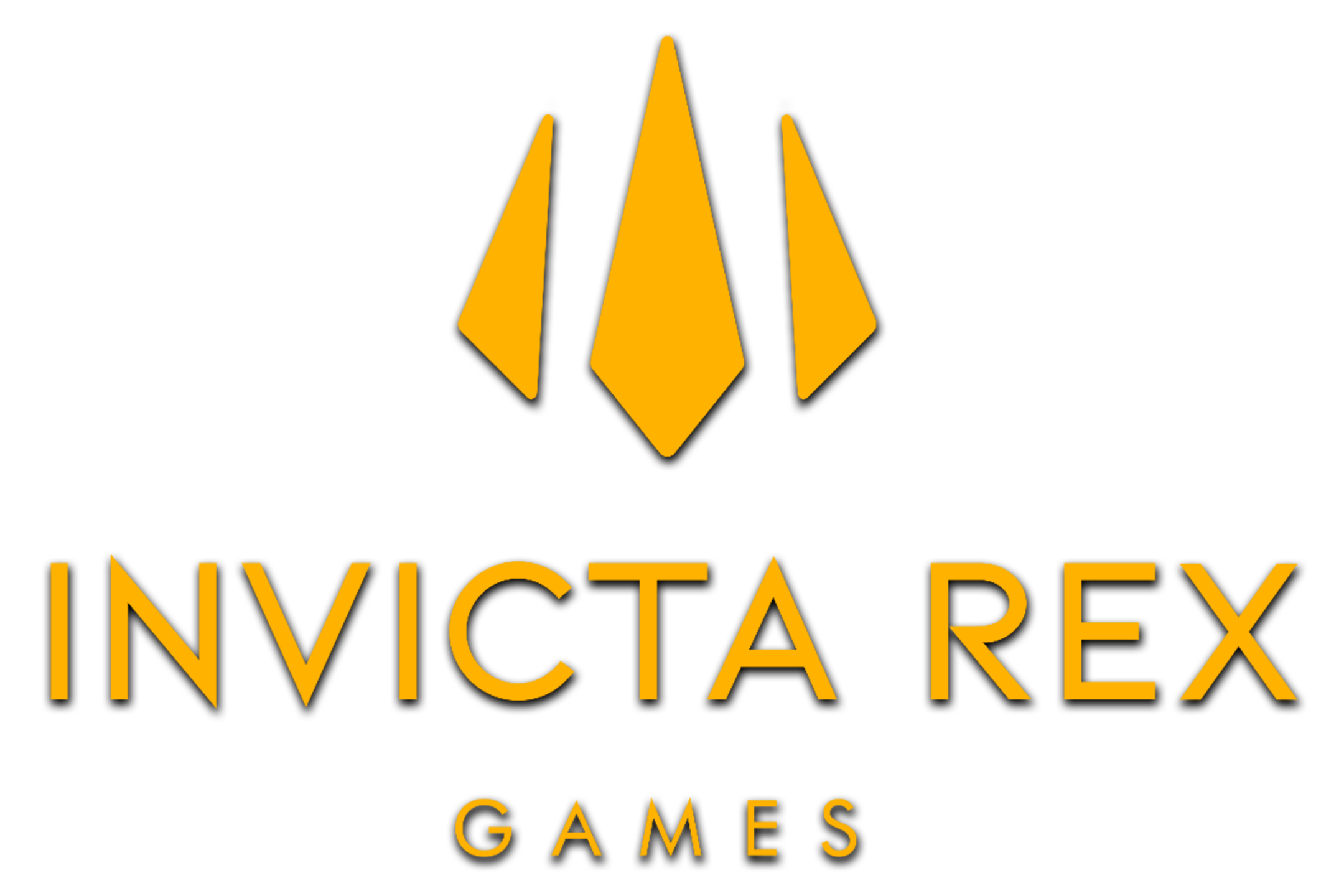
Find more info on BoardGameGeek.com / Kickstarter here: https://boardgamegeek.com/boardgame/315333/song-for-war-mediterranean-theater
If you liked this review, please consider joining us on our social pages or subscribing to our newsletter:
FB Community: https://www.facebook.com/groups/ttucommunity/
Instagram: https://www.instagram.com/tabletop_united/
Newsletter: https://www.subscribepage.com/tabletopunited

